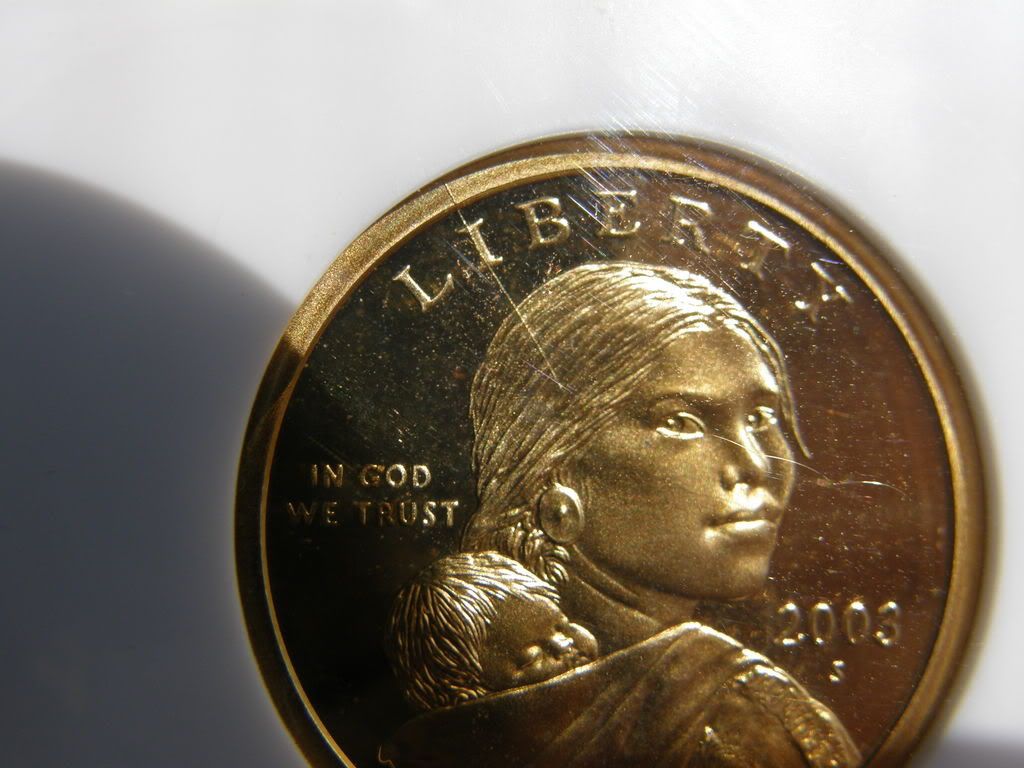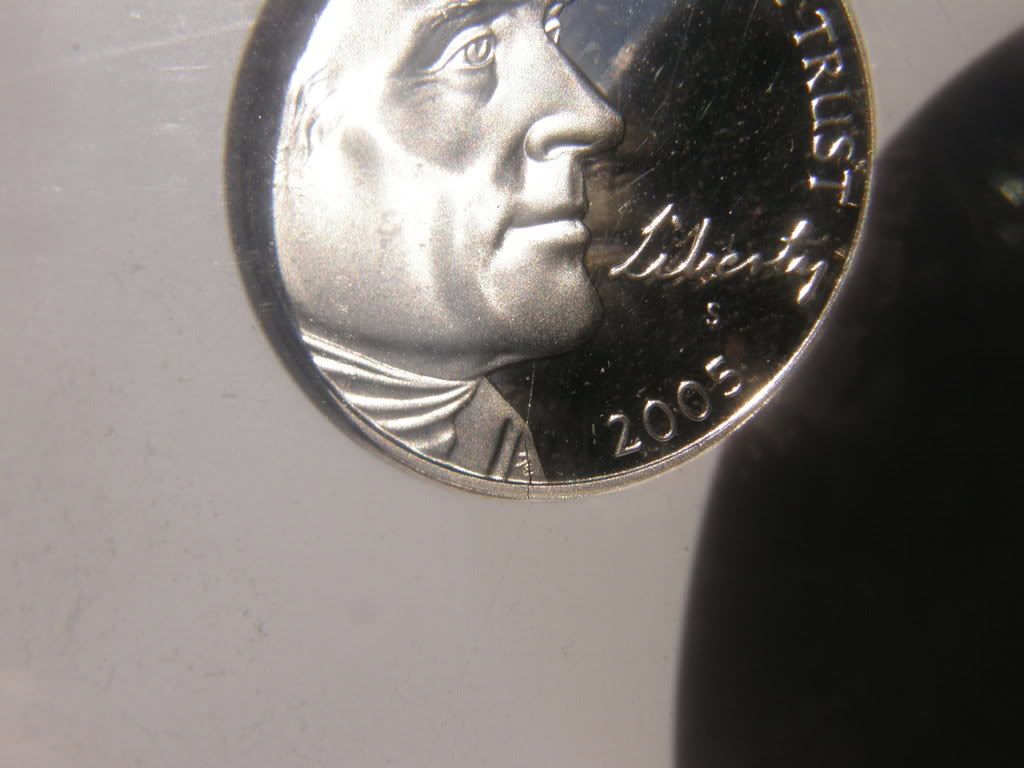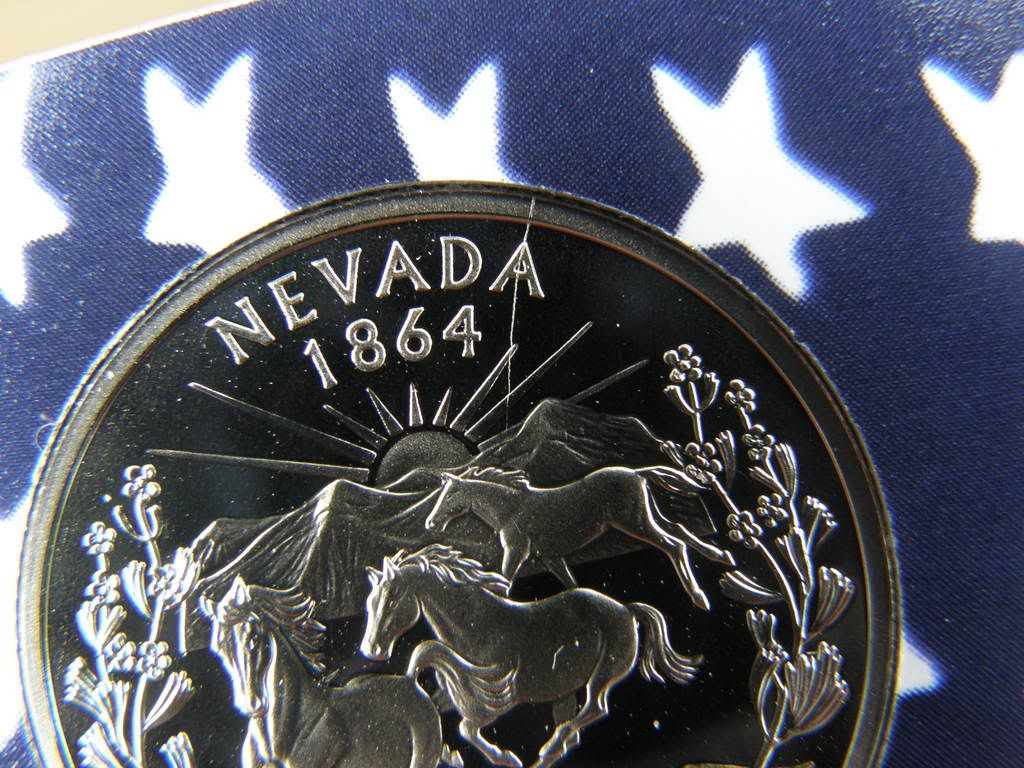
Neat die crack!
Collapse
X
-
People have taken to calling these "spiked heads". Personally, I think nicknames are uninformative at best and misleading at worst. A die crack is a die crack, that's all. If you're going to distinguish them, it should be on the basis of physical features, e.g., a conventional die crack, a bi-level die crack, a rim-to-rim die crack, a pre-cud die crack, a blind-ended die crack, etc.Mike Diamond. Error coin writer and researcher.
-
-
Well in my opinion. They should be given names to attract more people to the error coin business. Why is it on one side of the coin business it is ok to name errors like "THE THREE LEGGED BUFFALO" and on the other side of the coin business IE:die cracks it is not? There are examples of older coinage with die cracks on them that do have names given to them. However, modern day coinage does not. Is that fair and what about proof coinage that have these die crack errors on them? You know how hard these coins are to find? VeryOriginally posted by diamond View PostPeople have taken to calling these "spiked heads". Personally, I think nicknames are uninformative at best and misleading at worst. A die crack is a die crack, that's all. If you're going to distinguish them, it should be on the basis of physical features, e.g., a conventional die crack, a bi-level die crack, a rim-to-rim die crack, a pre-cud die crack, a blind-ended die crack, etc.
Comment
-
-
The 1937-D "three-legged" buffalo nickel is a perfect example of the misuse of nicknames. It's a rather pedestrian example of intentional die abrasion ("die polishing"). Much more severe cases can be found on other denominations for a few bucks. Its popularity is simply a matter of hype and getting listed in the Red Book.Mike Diamond. Error coin writer and researcher.
Comment
-
-
Originally posted by diamond View PostThe 1937-D "three-legged" buffalo nickel is a perfect example of the misuse of nicknames. It's a rather pedestrian example of intentional die abrasion ("die polishing"). Much more severe cases can be found on other denominations for a few bucks. Its popularity is simply a matter of hype and getting listed in the Red Book.
However,it's good for the error coin business right?
Comment
-
-
I'm not in the error coin business. I am not interested in bamboozling the public with nicknames and pump-and-dump marketing blitzes. I am the business of providing information. I cannot control what people do with that information.Mike Diamond. Error coin writer and researcher.
Comment
-
-
Originally posted by diamond View PostI'm not in the error coin business. I am not interested in bamboozling the public with nicknames and pump-and-dump marketing blitzes. I am the business of providing information. I cannot control what people do with that information.
Isn't bamboozling another name for marketing?
Comment
-
-
The practice of assigning names to a particular error goes way back and it is nothing more than a ploy used by the cunning salesperson to incite the unknowing public to buy the product at a rate of more than it is worth. The "three legged" 1937-D Buffalo nickel is a great example of this. However, I'll go one better and state that the "speared bison" on the 2005 nickels, which is nothing more than a well placed die scratch or gouge, tops anything as far as name calling and hype. Not only did it "bamboozle" the unknowing public, it also spawned a batch of names that had the poor bison doing everything imaginable and/or being struck with all types of Indian weaponry. Nor did it stop there, but seemingly spilled over to describe various other die anomalies, all minor to very minor, on more than one denominational series of coins. One needs only to scan the "error coin" category on Ebay to see that it is still a widely used practice, employed mostly by the hype sellers or the unknowledgeable seller who having been stuck with this unwanted "error" is trying to recoup their loss to another unknowledgeable buyer.
This naming of errors was not done to educationally inform the people of just what type of anomaly was on the coin, it was to sell that coin for an inflated price. It is a pure and simple fact. And we at CONECA, which is an educational organization to benifit error and variety coin collectors, feel that such names do little to add an understanding of what that particular error or variety is.
As far as guidelines to the selling of variety and error coins. I do not sell on sites, I do sell to friends and people that I do know who ask for a particular coin. However, the best advice that I can give is to ask yourself, after you have determined what it is you are selling, "would I buy this coin from myself, for the price I asked, knowing what it is?". If the answer is yes and a HONEST yes, then you are in business. If you can not make a sale to yourself, then re-think your process.
Now to the coin that you posted. Yes, it is a somewhat neat die crack, although nothing special in its own sense. When I search circulated rolls of Lincoln cents, I'll run across 30 to 40 of them in a $25.00 box. I imagine that you will see less on the dollar coin and if that type die crack would be collectible, it would be on the proof coin where quality control is the highest. And of course, there are other forms of die cracks that are collectible and worth a premium. Die cracks that run the full length of the die are very rare. Retained broken dies, which are a series of connected die cracks or one die crack from rim to rim , with the piece still in place ( if the piece is out, then it is a rim die break). Plus there are other types of interesting die cracks that would be collected if a person is so inclined to do so.
I hope that this answers your questions, but if not, I am here to do so.
BJ NeffMember of: ANA, CCC, CONECA, Fly-in-club, FUN, NLG & T.E.V.E.C.
Comment
-






Comment